Fishing expert Lee Rayner shares some of his best advice about fishing for squid.
What could be better than a species that is available in all waterways around the country and in a lot of places can be caught from a boat or on land? Even better, you can keep it simple, using a hand line, or get fancy and use high-end tackle. Whatever you choose, you can catch one of the tastiest things from the ocean and also one of the best baits.
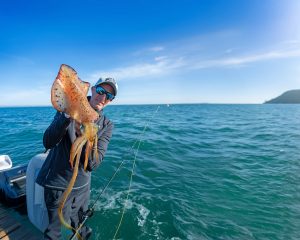
Personally, I love fishing for squid. Sure, they will never win a competition for being a hard fighter, but they eat baits and jigs and are one of the best species for kids and new anglers to target.
Locations
There are various species of squid available around the country with the biggest being the Southern Calamari which can grow well over 3kg in weight, which is a fair effort for a species that only lives for around 300 days. When it comes to areas that hold squid it’s pretty simple – just look for areas of reef and weed. Squid use this to hide in so they can try and avoid being eaten by other fish – as they rate highly on the menu for most species – but also it allows them to ambush prey in the same areas.
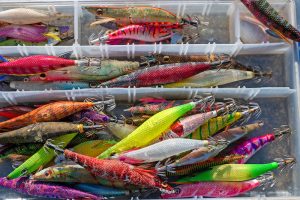
When it comes to water depth it really isn’t an issue as squid will happily hang out in just a metre of water right out to over 100m in depth. Often times some of the best places to find squid are around offshore islands in protected coves along and around our coastline. The sorts of places that people love to go and take their boats for a day out or a weekend away.
One key thing to remember is that squid have a very fine gill system and are a visual predator so they don’t like dirty water as much. With this in mind, always try to search for clean water and you will have more consistent success.
Wharves and piers are also prime locations to find squid – especially if they have reef and weed around them. This is due to the pylons generally holding small baitfish for the squid to feed on. It’s even better if the wharves are lit up at night, then the squid fishing can be exceptional as the squid love to hunt around in the lights that have attracted the baitfish. Also, keep this in mind if you’re out on the water and anchored up for the night in a quiet shallow cove, as you will often have the squid lined up ready for catching while you’re having dinner.
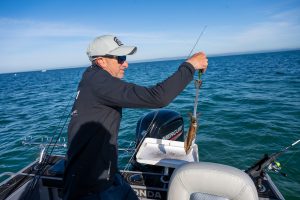
Squid jigs
Squid will eat whole fish baits, and a small fish suspended on a squid spike under a float is also very effective. However, if you want to have some real fun, then fishing with a squid jig can be deadly effective.
Squid jigs come in several sizes from tiny 1.8 through to the big 4.0 sizes, but sizes 2.5 and 3.0 are the most popular. Personally, I prefer the 3.0 and 3.5 sizes as they are still quite small for an animal that has no dramas attacking a fish nearly as big as they are. Plus, they offer several benefits, including that they cast further and sink at about 3-4 seconds per metre so you can easily count them down to get them near the bottom where the squid live. The other benefit is that the bigger jigs usually attract bigger squid and they attack them harder, so you get a good hookup rate.
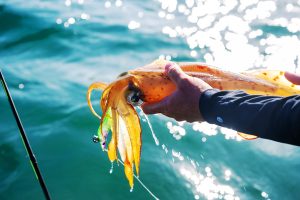
When it comes to choosing a squid jig colour there are literally thousands to choose from. Don’t just look at the pretty pattern on the outside but take note of the actual base colour under the cloth and outer pattern. You will notice some have a pearl rainbow base, red, gold, black, clear, green or several other choices. Darker base colours like red are often really good in low light or at night, while lighter colours are usually the go when it’s light and sunny.
Next is the colour on the outer cloth and this is where the colour options really start to get out of control. Most have a whitish side and belly with a solid colour on the back. For example, white sides and a pink back. Finally, there are the pretty stripes and dots that are patterned on the jig. Prawns are a favourite food for squid, and these stripes are meant to make the jig imitate the look of a prawn. Others will have fish patterns printed on them or are just plain.
When it comes to actually selecting squid jigs the best advice I can offer is to get a couple and mix up colour schemes. By that I mean if you get two then get a bright one and a dark one. They all work, but often times there will be a certain colour they really want. Another key element of a good jig is whether it has UV properties. This is either all over the jig or often just on the stripes and patterns, and can really make a difference. Squid only see in monochrome (black and white) but they also see UV light very well. Most better-quality will jigs state on the packaging if they have UV properties. Some of my favourite jigs are, Duo Egimasa, Harimitsu, Shimano Sephia, and Rui.
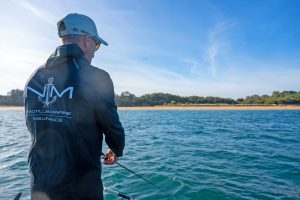
Squid tackle
As previously mentioned, you can use a hand line to chuck a jig on and hang over the side. I prefer to douse a rod and reel, as then you can cast the jig around, covering more water and imparting lots of action on the jig to get the squid fired up.
When it comes to rods look at something around the 7ft length or even longer as you will be able to cast further. Genuine squid rods are rated on the jigs they are designed to fish rather than a line rating, my own favourite rod is 8ft long and designed to cast 3.0-3.5 jigs. If you’re getting a normal rod look at something in the 3-4kg rating as really light rods are not designed to cast a bulky squid jig.
As for reels you can use whatever you like but anything in the 2500-3000 size such as the Shimano Nasci, or if you want higher quality then the Vanford models, are hard to go past. Line can be mono or braid, but something around 8-12lb is plenty as the squid don’t fight hard and the slightly heavier line helps you to get the jig back if you snag it on the bottom.
Work the jig to catch the squid
As mentioned earlier squid are so good for kids and those people starting out in fishing. Casting a jig around helps you get better at casting, and then working the jig back keeps you interested, rather than waiting hours for a bite.
The method is pretty simple – cast the jig out and sink it down near the bottom, then you can either give the jig one or two sharp upward flicks of the rod tip, then drop the rod tip back down, wind up the slack line, wait a few seconds and repeat. Another simple retrieve is a single smooth lift of the rod tip, drop rod tip, wind up slack then allow jig to sink and repeat.
When you get a squid you will lift the rod and it will feel like you’re snagged for a second, then the rod will pulse as the squid pulls backwards. At this point don’t have too much drag on the reel or pull too hard, as if the squid is just hooked you will often break the tentacle.
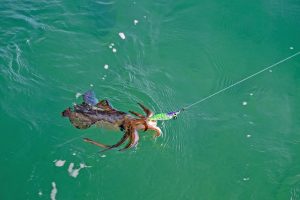
Instead let it do its thing and wind it towards you when it’s not pulling. A word of warning – when you get the squid near you as it hits the surface it will often shoot water – or ink everywhere, so try not to have it pointing at you. The reality is if you catch enough squid eventually you will cop a pile of ink, so if you plan on doing this form of fishing leave the fancy clothes at home. So, now you know what you need to do – now it’s time for you to get out on the water and get stuck into one of the most fun species available.
Photography by Paul Dodd.
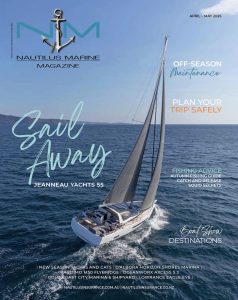
This story was published in the April-May issue of Nautilus Marine Magazine.
About Nautilus Marine Magazine
Nautilus Marine Magazine offers readers 100 pages of content to support their on-water lifestyle. Published every two months across Australia and New Zealand for an audience of Nautilus Marine Insurance customers, members of the marine industry and boating enthusiasts, our magazine features expert features, boat profiles, interviews with boating and sailing identities, fishing adventures, travel destinations, boating lifestyle content and dining. No matter what side of the boating spectrum you sit on, power or sail, Nautilus Marine Magazine is a must read.
About Nautilus Marine Insurance
Nautilus Marine Insurance is a leading provider of insurance solutions for recreational vessels and marine business assets across Australia and New Zealand, protecting over 45,000 vessel owners and marine industry members. For over 19 years, Nautilus Marine Insurance has been a specialist supplier of insurance for pleasure craft and marine business assets and liability insurance. Nautilus Marine Insurance provide coverage for pleasure craft of all sizes, ranging from sailing dinghies and personal watercraft (PWCs) through to yachts, runabouts, and luxury motor yachts as well as commercially operated boats and marine businesses. Through its Industry Lines division, Nautilus Marine Insurance also specialises in providing tailored business insurance for clients servicing the recreational boating market including marina operators and owners, yacht clubs and boat clubs, boat dealerships and most marine trades including boat repairers and boat service providers. Thousands of professional insurance advisers and brokers choose to work with Nautilus Marine Insurance. These insurance experts trust the breadth of Nautilus Marine’s products and claims support to recommend our products and services to their clients. Nautilus Marine Insurance has a passionate team of over 90 staff and offices across Australia and New Zealand. Nautilus Marine Insurance is a business name of NM Insurance Pty Ltd, ABN 34 100 633 038, AFSL 227186. It has binding authority from Zurich Australian Insurance Limited (ZAIL) which allows it to enter into and arrange policies of insurance and handle and settle claims made under them. Visit nautilusinsurance.com.au to find out more.









